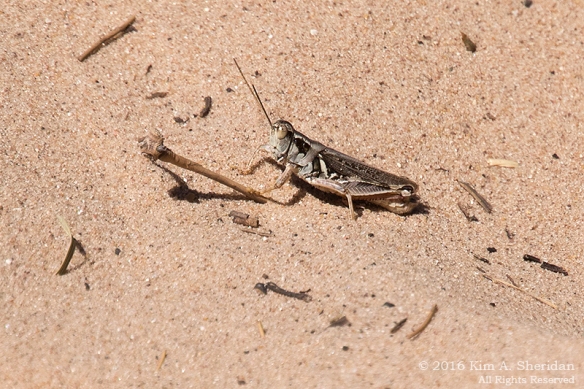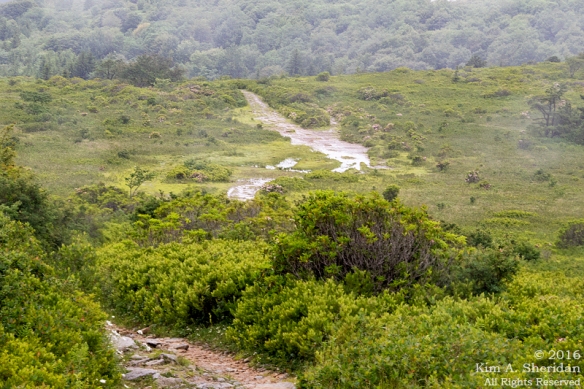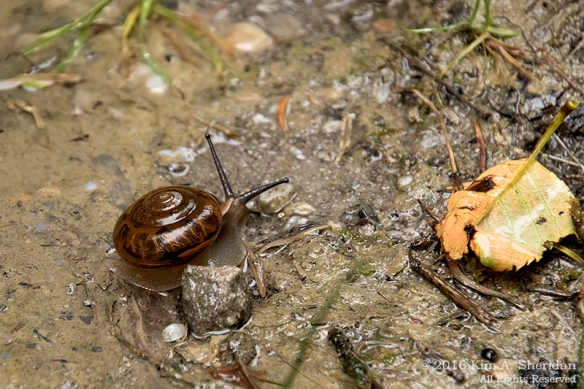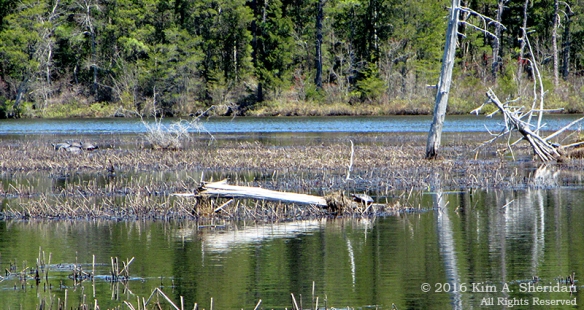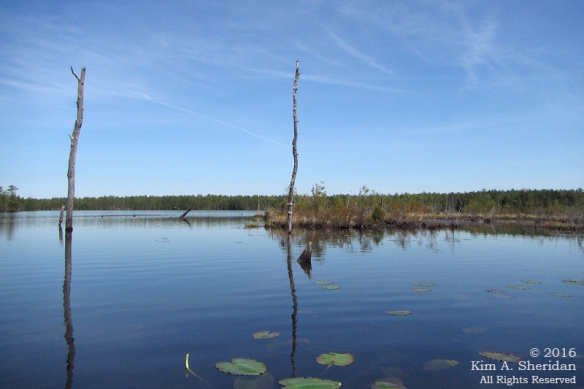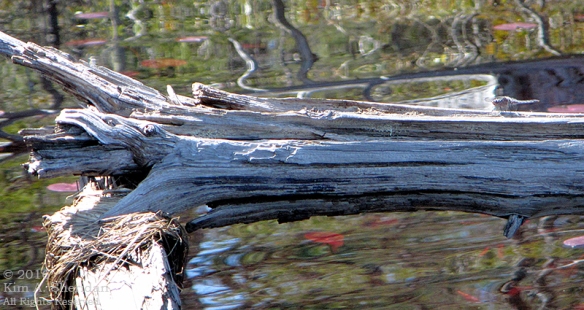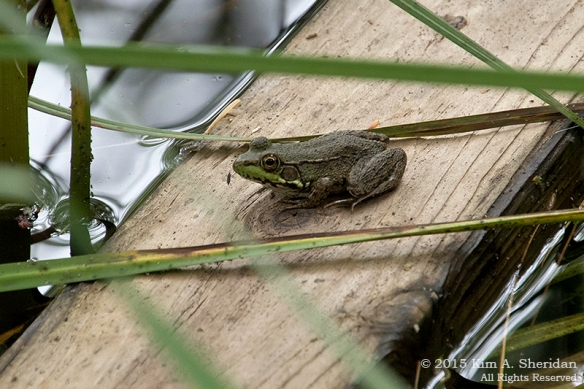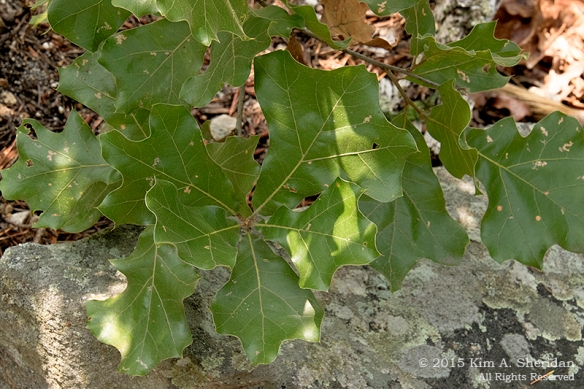

Old trees float on a sea of wildflowers, Cove Hardwood Nature Trail, Great Smoky Mountains National Park.
Our timing was way off.
Best to visit Great Smoky Mountains National Park during the peak of fall foliage season, or in summer when the mountains are a lush deep green. Instead we were there during mid-April, before the trees leafed out. The mountains were still a dull grayish brown in all my photos. And did I mention the rain?
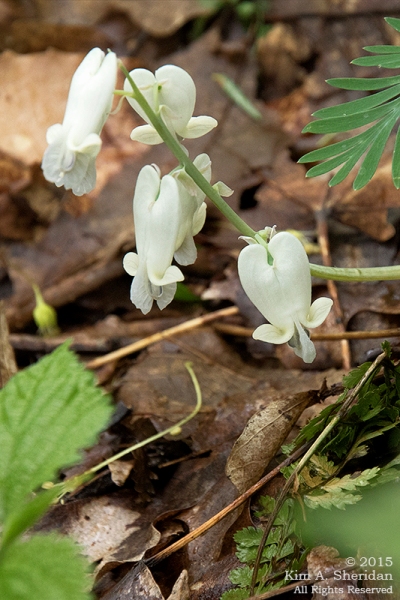
Squirrel Corn, Cove Hardwood Nature Trail.
Our timing was spot-on in one sense, though – we visited in the peak of the spring ephemeral wildflower season.
Many wildflowers live their entire above-ground life in a few weeks in the spring.
Taking advantage of warm soil, abundant moisture, and the full force of the unfiltered sunlight, these fleeting beauties awaken in early spring.
Drawing on last year’s reserves of energy, they send up stems and leaves while gathering and storing as much fresh energy as they can. They bloom, and set and disperse seeds.

Not all violets are purple. Clockwise, from top left: Canadian Violet, Early Yellow Violet, Woolly Blue Violet, Bird’s Foot Violet.
Feeding and reproduction complete, the flowers, stems and leaves wither and die, leaving the strong roots and rhizomes below the soil to enter dormancy until the next year.

Rue-anemone, Deep Creek Trail.
All of this activity in just a few short weeks, and we happened to be there to see it!

Showy Orchis, Deep Creek Trail.
Plant diversity in the Smokies is matched by only a few areas worldwide. Nearly 1500 kinds of flowering plants call the southern Appalachians home.

Fringed Phacelia, Cove Hardwood Nature Trail.
Abundant rainfall, coupled with a wide range of elevations, provides a variety of habitats for our leafy friends. Most of the park is heavily forested. There are eight distinct forest types.

The Cove Hardwood Nature Trail.
Photo by Don Nigroni.
Don and I wanted to explore an old-growth forest, something neither of us had experienced before. We chose the Cove Hardwood Nature Trail, which winds through a cove hardwood forest in Sugarlands Valley.
This cove is cool, sheltered and very moist, with tiny runs seeping from the slopes everywhere. Thirty species of trees are found here, including white basswood, yellow birch, tulip poplar, and hemlocks.

Yellow buckeye tree, Cove Hardwood Nature Trail.
The old-growth forest area starts in the upper reaches above the logging limit, where the forest has never been altered.
Many of the trees have lived a long time, and are really big.
This venerable giant, a 150 year old yellow buckeye, stands 100 feet tall.
Unlike the disturbed forests we are used to, the understory below the widely spaced trees is wide open.
The ground is not, though. A riot of mosses, shade-adapted plants and those wonderful spring ephemerals carpet the soil.

The Forney Ridge Trail winds through a boreal spruce-fir forest.
I fell in love with another unique forest ecosystem we encountered a number of times, the boreal spruce-fir forest. This type of forest is found in the North Woods of Maine and Canada. So what’s it doing in the Southern Appalachians? Ice, ice, baby. During the glacial periods, the trees and plants of the far north migrated here ahead of the glaciers. They found a favorable climate in the high altitudes of the Smokies and stayed after the glaciers retreated.

Spruce-fir forest on the Forney Ridge Trail.
The loftiest slopes of Clingman’s Dome and other high peaks are draped in red spruce and Fraser firs. The day we trekked the Forney Ridge and Appalachian Trails, the woods were cloaked in a heavy mist. I felt we had entered a mysterious fairyland, softly decorated in deepest green and luscious auburn. Little dewdrops hung suspended from spruce needles. Mosses clung to both standing and fallen trees, while lichens coated the rocks.

Mist dripping from spruce needles.

Living and skeletal Fraser fir on Clingman’s Dome.
There is a sadness in the boreal woods, though.
Since the 1960s, the Fraser firs have been decimated by a non-native invasive insect known as the balsam woolly adelgid.
This nasty critter eats the sap of the tree while injecting a toxin that kills a tree in a few short years.
The forests are littered with the ghostly skeletons of dead Fraser firs. It is all too common to see numerous bare tree trunks standing amidst live firs.
What a shame it would be to lose these majestic trees altogether.

Fraser firs on Clingman’s Dome.
During our time in the Great Smoky Mountains National Park, I counted 25 different flower species that I was able to identify, and more that I couldn’t put a name to. We walked through southern woodlands, and forests more common to the far North.
We came to the Smokies for the mountains, but left awed by the wildflowers and the woods.

Spruce-fir forest along the Appalachian Trail.
Maybe our timing wasn’t so bad after all!

 FUN FACT: Sunflowers are composite flowers, where all is not what it seems. What look like petals are actually infertile ray flowers that attract vital pollinator species to the plant. The center of the sunflower is made up of hundreds of small flowers, each with five petals, a male stamen and a female stigma, where pollination takes place.
FUN FACT: Sunflowers are composite flowers, where all is not what it seems. What look like petals are actually infertile ray flowers that attract vital pollinator species to the plant. The center of the sunflower is made up of hundreds of small flowers, each with five petals, a male stamen and a female stigma, where pollination takes place.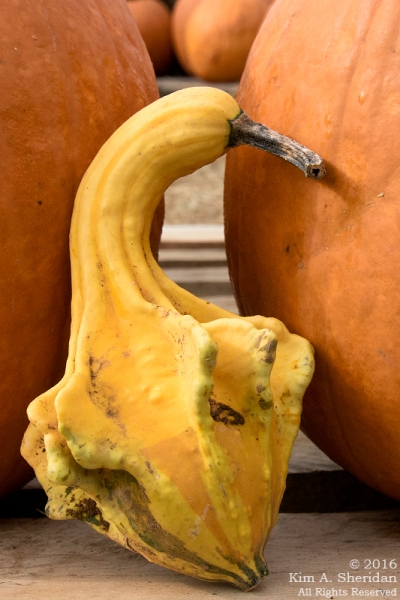 This gourd looked just like a goose to me. I took him home and cleaned him up.
This gourd looked just like a goose to me. I took him home and cleaned him up.























